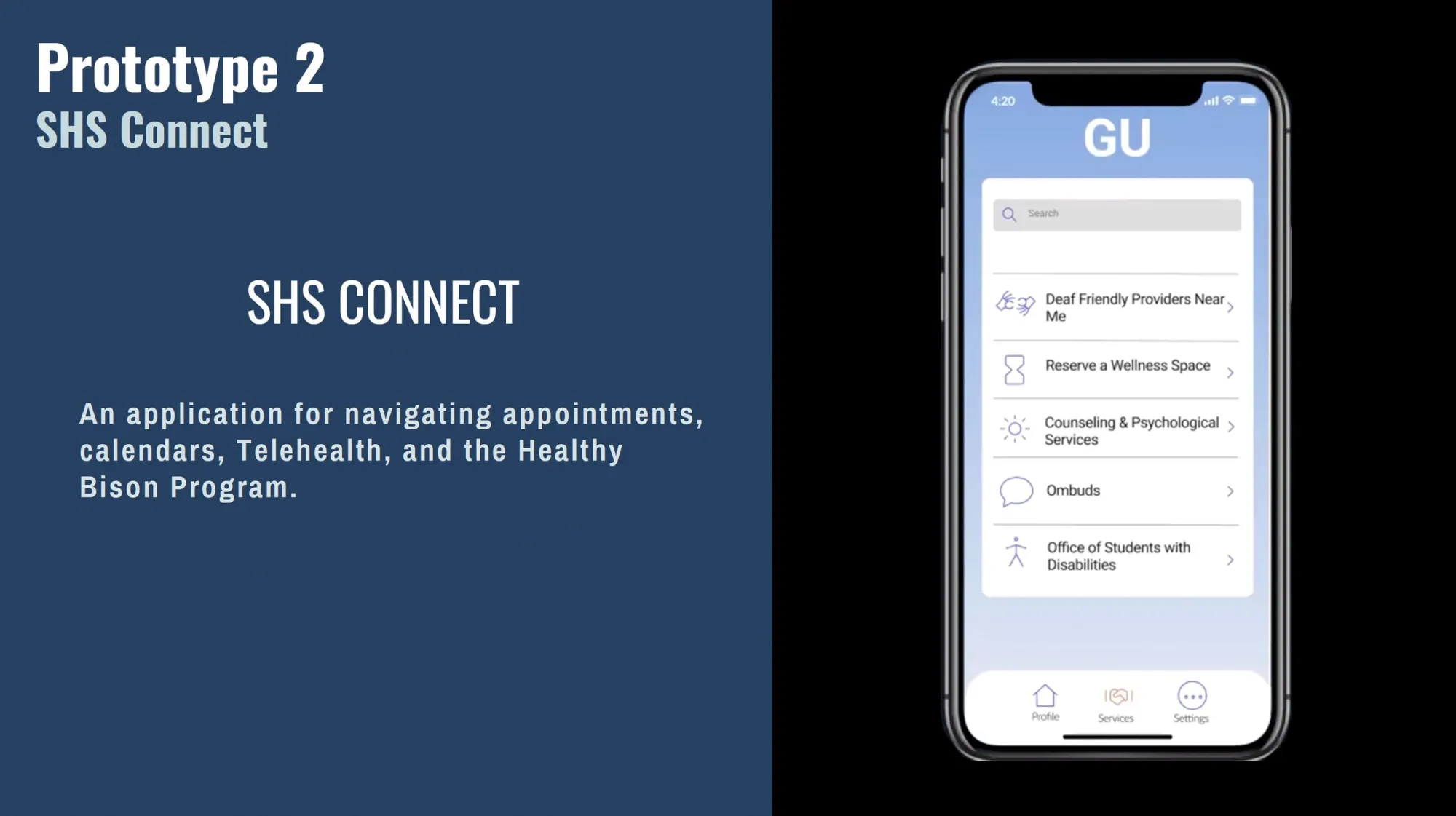Building connections to improve health services for deaf communities
Challenge
How might we bridge health service silos and create effective communication channels that will best serve deaf communities?
Context
Outdated systems create unequal access to health care for deaf, deaf/blind, and hard of hearing communities. A team of four learners in the M.A. in Design focused on Health program collaborated with Gallaudet University to design a more welcoming, positive experience for deaf communities in partnership with the school’s Student Health Services.
While this challenge was tailored to the individual collaboration between Gallaudet and Student Health Services, the team’s vantage on how much of our world and systems are designed around the assumption of hearing, sight and full mobility inspires utility in how we approach design in health.
Approach
Break down the larger system challenge into tangible opportunities for change and develop solutions that address multiple opportunities.
Insights
- Gallaudet values connection and collaboration, but their current relationship with Student Health Services did not reflect that value based on its disjointed nature and confusion over roles and protocols.
- Certain student populations misused Student Health Services, and long wait times were often due to overcrowding during lunch.
- High schoolers at the Model Secondary School for the Deaf tended to report symptoms that correlate with poor sleep hygiene and burnout. However, as the system was designed, there were no other options where students might turn.
- The systems were highly outdated, including how students made appointments, which added additional barriers to serving the intended communities.



Outcome
Improved health services for deaf communities.
The team delivered a shared mental model of the problems that exist. Each administrator and stakeholder offered insight into a small part of the whole picture but had never seen a larger representation of the systems-level problem. Facilitating this wider understanding was one of the great successes of this project, allowing the Gallaudet team to relate to one another in new ways.
The design team also applied service design in creating a smartphone application giving students an accessible method of making an appointment, finding available services, and ultimately seeking health care. In addition, the team leveraged experience design to create a physical space that would supplement the real needs of the resident high school students at the Model Secondary School for the Deaf. The design modifications included lighting changes, sense-engaging textures, and an ambiance of tranquility.
The team strengthened health screening efforts, furthered education on health-related topics, and connected Gallaudet students interested in health professions with deaf or signing mentors who can guide them into the professional space.
Learn More
Find out more about Gallaudet University.
Design Team
Nikolette Amoros
Sadiya Hinedi
Jocelyn Suarez
Luke Thomson
Project Summary
Students partnered with Gallaudet University to co-design improvements to health services for deaf communities, addressing gaps in communication and care access. Their design interventions included a smartphone app for scheduling, sensory-friendly space enhancements, and a shared systems map to align stakeholders—fostering trust, clarity, and more inclusive experiences across student health services.
Project Contributors
Gallaudet University

